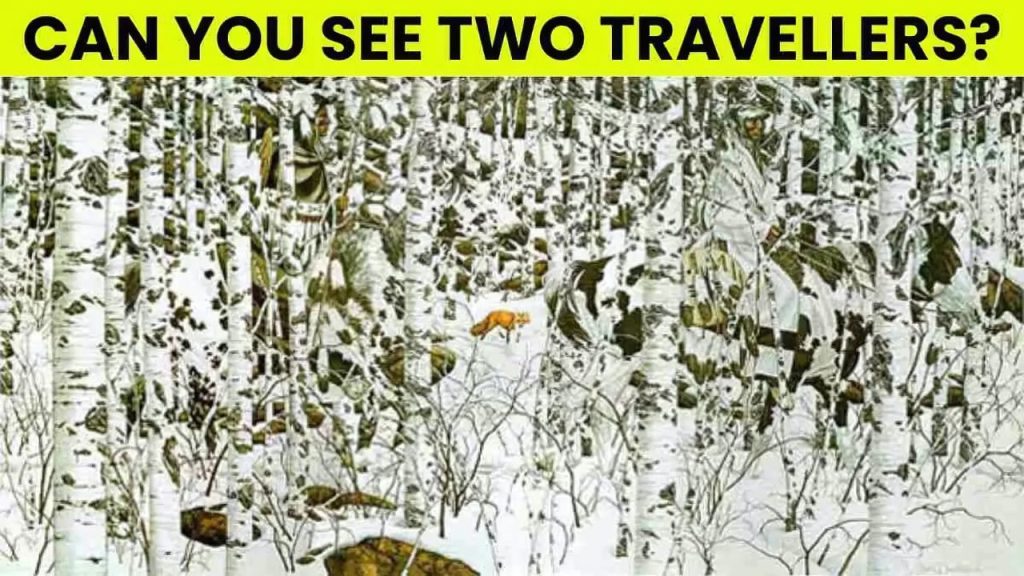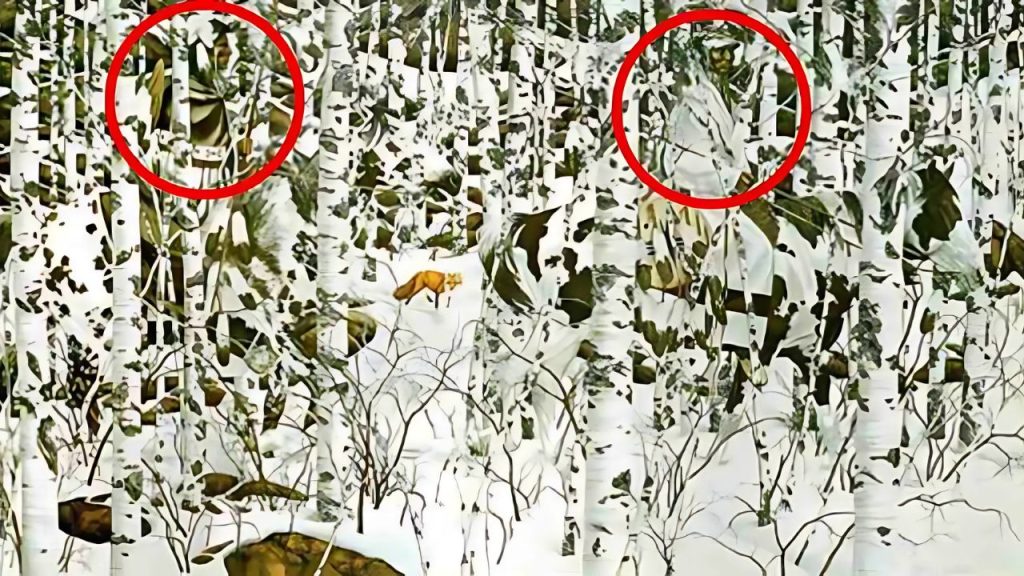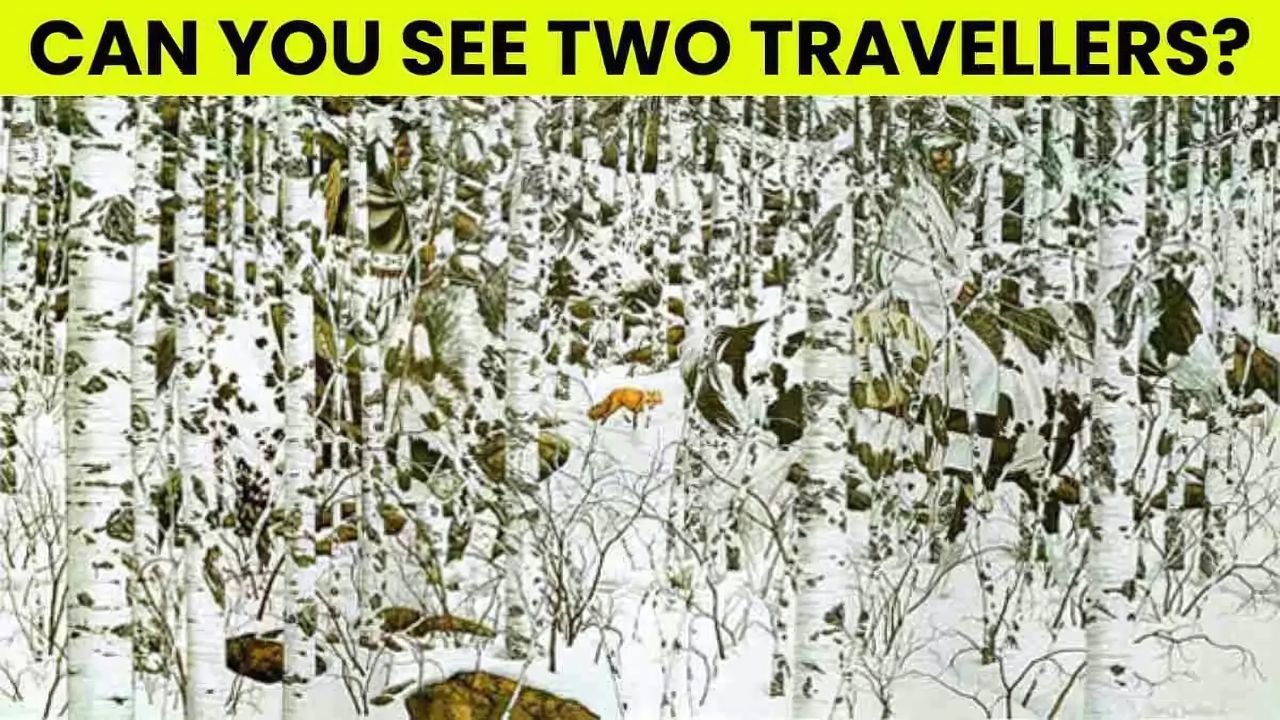Test your visual perception with this challenging optical illusion. Can you spot two hidden people in a snowy forest scene within 8 seconds? Challenge your IQ now!
What Makes Optical Illusions So Fascinating?

Optical illusions have captivated human minds for centuries, challenging our perception and making us question what we see. These visual puzzles work by exploiting the way our brain processes information from our eyes. Sometimes what appears obvious isn’t there, while hidden elements escape our immediate notice.
The human brain constantly tries to make sense of visual input by filling gaps and creating patterns. This natural tendency often leads us to miss details that are right in front of us. Optical illusion tests serve as excellent tools for measuring visual acuity and cognitive processing speed.
The Science Behind Visual Perception
Our eyes capture light and convert it into electrical signals that travel to the brain. The visual cortex then interprets these signals, creating the images we perceive. However, this process isn’t always perfect, especially when dealing with complex scenes or camouflaged objects.
Pattern recognition plays a crucial role in how we identify objects in our environment. When objects blend seamlessly with their surroundings, our brain struggles to distinguish them from the background. This phenomenon explains why some people excel at spotting hidden figures while others find it nearly impossible.
Understanding the Snowy Forest Challenge
The snowy forest optical illusion presents a winter landscape where two human figures are cleverly concealed within the scene. These figures blend so naturally with the environment that only individuals with exceptional visual perception skills can identify them quickly.
Snow creates natural camouflage, making it particularly challenging to distinguish human shapes from tree branches, shadows, and other natural elements. The monochromatic color scheme adds another layer of difficulty to this visual puzzle.
Why 8 Seconds Matter
Setting a time limit of 8 seconds increases the pressure and makes this challenge more demanding. Quick identification requires your brain to rapidly scan, process, and recognize patterns without getting distracted by irrelevant details.
Research shows that people with higher visual intelligence can process complex images faster than average individuals. This ability correlates with better problem-solving skills and enhanced cognitive flexibility.
Techniques for Solving Visual Puzzles
The Systematic Scanning Method
Instead of randomly looking around the image, develop a systematic approach. Start from one corner and methodically scan across the entire picture. This technique ensures you don’t miss any section while searching for hidden elements.
Grid scanning involves mentally dividing the image into smaller sections and examining each area thoroughly. This method prevents your eyes from jumping around aimlessly and increases your chances of success.
Focus on Unusual Shapes and Shadows
Human figures have distinctive silhouettes that differ from natural objects like trees and rocks. Look for vertical lines that might represent standing figures or curved shapes that could indicate a person’s posture.
Pay special attention to areas where shadows seem inconsistent with the surrounding environment. Hidden figures often create subtle shadow patterns that don’t match the natural lighting of the scene.
The Psychology of Hidden Object Detection
Cognitive Load and Attention
Finding hidden objects requires significant cognitive resources and sustained attention. Your brain must simultaneously process multiple visual elements while filtering out distracting information. This mental juggling act explains why some people find these challenges exhausting.
Individuals with better working memory typically perform better on visual search tasks. They can hold more information in their minds while scanning for specific targets.
Individual Differences in Visual Processing
Not everyone processes visual information in the same way. Some people naturally excel at detecting patterns and anomalies, while others struggle with spatial relationships. These differences stem from variations in brain structure and neural connectivity.
Visual-spatial intelligence varies significantly among individuals and can be improved through practice and training. Regular exposure to optical illusions and visual puzzles can enhance your ability to spot hidden elements quickly.
Benefits of Optical Illusion Training
Enhanced Cognitive Function
Regular practice with visual perception challenges can improve various cognitive abilities including attention span, processing speed, and working memory. These improvements often transfer to other areas of mental performance.
Studies suggest that people who regularly engage with optical illusions show better performance on standardized intelligence tests. The mental exercise provided by these puzzles strengthens neural pathways associated with visual processing.
Improved Observation Skills
Training your eyes to spot hidden details translates into better observation skills in daily life. You become more aware of your surroundings and better at noticing subtle changes in your environment.
This enhanced awareness can have practical benefits in various professions, from security work to medical diagnosis, where attention to detail is crucial.
Common Mistakes When Solving Visual Puzzles
Rushing Through the Process
Many people make the mistake of trying to solve optical illusions too quickly. While time limits add pressure, systematic observation often yields better results than frantic searching.
Take a moment to understand the overall composition before diving into detailed examination. Strategic patience often outperforms hasty scanning in complex visual challenges.
Focusing Only on Obvious Areas
Hidden figures are typically placed in locations where they blend naturally with the background. Avoid concentrating solely on empty spaces or areas that seem like obvious hiding spots.
Instead, examine areas where natural elements might conceal human shapes. Tree clusters, rocky formations, and shadow regions often harbor cleverly hidden figures.
The Role of Lighting and Contrast
How Snow Affects Visual Detection
Snowy environments present unique challenges for visual detection because snow reflects light uniformly, reducing contrast between objects. This uniform brightness makes it harder to distinguish shapes and outlines.
Monochromatic scenes like snow-covered forests eliminate color cues that normally help us identify objects. Your brain must rely solely on shape, texture, and shadow information to detect hidden elements.
Shadow Analysis Techniques
Shadows provide crucial information about the three-dimensional structure of a scene. Human figures cast shadows differently than natural objects, creating subtle clues for trained observers.
Look for shadow patterns that seem inconsistent with the surrounding terrain. Anomalous shadows often reveal the presence of hidden figures that blend with their background.
Advanced Strategies for Visual Search
The Peripheral Vision Technique
Sometimes hidden figures become more apparent when viewed with peripheral vision rather than direct focus. This technique works because peripheral vision is more sensitive to movement and shape changes.
Try looking slightly to the side of suspicious areas while maintaining awareness of potential figures in your peripheral field. This indirect observation method can reveal camouflaged objects that direct focus misses.
Pattern Breaking Analysis
Natural scenes follow predictable patterns in terms of texture, repetition, and structure. Hidden human figures disrupt these natural patterns in subtle ways.
Train your eyes to recognize pattern disruptions that might indicate the presence of artificial elements like human figures within natural settings.
Training Your Visual Perception Skills
Daily Practice Routines
Developing exceptional visual perception requires consistent practice. Spend 10-15 minutes daily working with various optical illusions and hidden object puzzles to strengthen your abilities.
Start with simpler challenges and gradually progress to more complex visual puzzles. This progressive training approach allows your brain to adapt and improve without becoming overwhelmed.
Cross-Training with Different Puzzle Types
Don’t limit yourself to one type of visual challenge. Practice with various puzzle formats, including hidden objects, stereograms, impossible objects, and ambiguous figure,s to develop well-rounded visual skills.
Each puzzle type exercises different aspects of visual processing, contributing to overall improvement in perception and recognition abilities.
The Answer Revealed

After examining the snowy forest scene carefully, the two hidden people can be found positioned strategically within the winter landscape. One figure stands partially concealed behind a cluster of snow-covered trees on the left side of the image, while the second person is cleverly camouflaged among the shadows and branches in the center-right portion of the scene.
These figures are masterfully integrated into the natural environment, using the contrast between dark clothing and bright snow to create an effective camouflage effect that challenges even experienced puzzle solvers.
Embracing Visual Challenges
Optical illusions like the snowy forest challenge serve as excellent brain training exercises that improve cognitive function while providing entertainment. Whether you spotted the hidden figures within 8 seconds or needed more time, the act of searching itself provides valuable mental exercise.
Regular practice with visual puzzles enhances observation skills, improves attention to detail, and strengthens pattern recognition abilities that benefit various aspects of daily life. Keep challenging yourself with new optical illusions to maintain and improve your visual perception capabilities.
